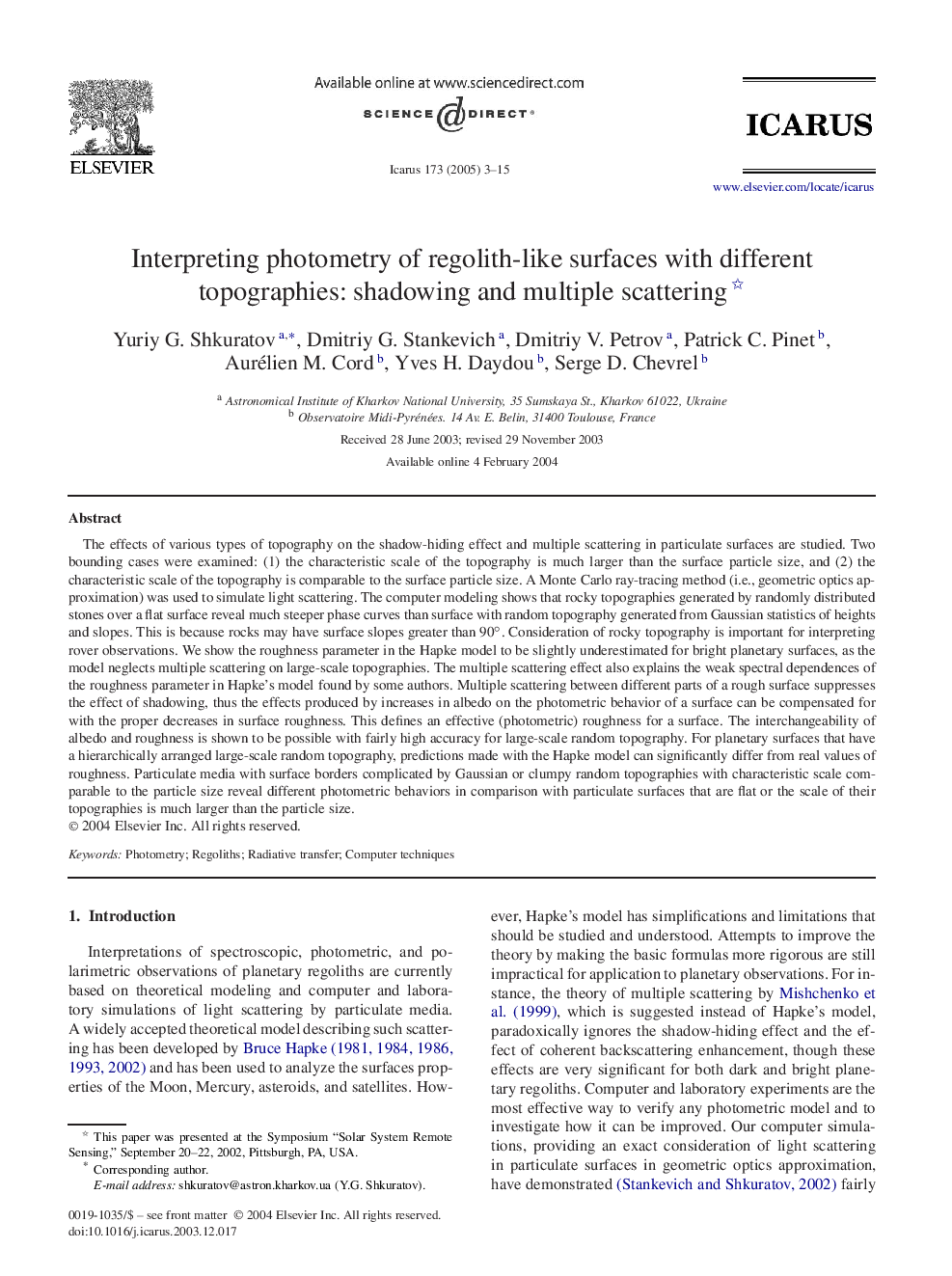| Article ID | Journal | Published Year | Pages | File Type |
|---|---|---|---|---|
| 10701981 | Icarus | 2005 | 13 Pages |
Abstract
The effects of various types of topography on the shadow-hiding effect and multiple scattering in particulate surfaces are studied. Two bounding cases were examined: (1) the characteristic scale of the topography is much larger than the surface particle size, and (2) the characteristic scale of the topography is comparable to the surface particle size. A Monte Carlo ray-tracing method (i.e., geometric optics approximation) was used to simulate light scattering. The computer modeling shows that rocky topographies generated by randomly distributed stones over a flat surface reveal much steeper phase curves than surface with random topography generated from Gaussian statistics of heights and slopes. This is because rocks may have surface slopes greater than 90°. Consideration of rocky topography is important for interpreting rover observations. We show the roughness parameter in the Hapke model to be slightly underestimated for bright planetary surfaces, as the model neglects multiple scattering on large-scale topographies. The multiple scattering effect also explains the weak spectral dependences of the roughness parameter in Hapke's model found by some authors. Multiple scattering between different parts of a rough surface suppresses the effect of shadowing, thus the effects produced by increases in albedo on the photometric behavior of a surface can be compensated for with the proper decreases in surface roughness. This defines an effective (photometric) roughness for a surface. The interchangeability of albedo and roughness is shown to be possible with fairly high accuracy for large-scale random topography. For planetary surfaces that have a hierarchically arranged large-scale random topography, predictions made with the Hapke model can significantly differ from real values of roughness. Particulate media with surface borders complicated by Gaussian or clumpy random topographies with characteristic scale comparable to the particle size reveal different photometric behaviors in comparison with particulate surfaces that are flat or the scale of their topographies is much larger than the particle size.
Related Topics
Physical Sciences and Engineering
Earth and Planetary Sciences
Space and Planetary Science
Authors
Yuriy G. Shkuratov, Dmitriy G. Stankevich, Dmitriy V. Petrov, Patrick C. Pinet, Aurélien M. Cord, Yves H. Daydou, Serge D. Chevrel,
